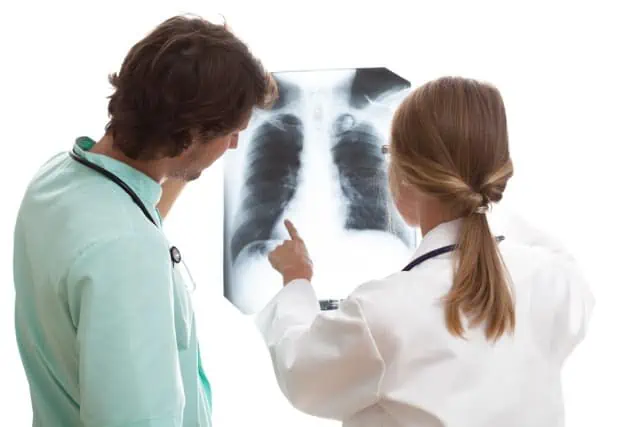Bronchiolitis Obliterans (Popcorn Lung Disease)
- Last Updated: July 14th, 2025

Attorney Jessica Paluch-Hoerman, founder of TruLaw, has over 28 years of experience as a personal injury and mass tort attorney, and previously worked as an international tax attorney at Deloitte. Jessie collaborates with attorneys nationwide — enabling her to share reliable, up-to-date legal information with our readers.
Legally Reviewed
This article has been written and reviewed for legal accuracy and clarity by the team of writers and legal experts at TruLaw and is as accurate as possible. This content should not be taken as legal advice from an attorney. If you would like to learn more about our owner and experienced injury lawyer, Jessie Paluch, you can do so here.
Fact-Checked
TruLaw does everything possible to make sure the information in this article is up to date and accurate. If you need specific legal advice about your case, contact us by using the chat on the bottom of this page. This article should not be taken as advice from an attorney.
Intro to Bronchiolitis Obliterans (Popcorn Lung Disease)
Bronchiolitis obliterans (also referred to as “popcorn lung disease” of “flavoring-related lung disease”) is an extremely serious, non-reversible, and obstructive lung disease in which the bronchioles of the lungs are blocked by the growth of fibrous tissue.

This causes inflammation in the lungs and results in scarring and hardening of the tissue and obstruction of the airway.
Considered to be a “flavorings-related” condition, bronchiolitis obliterans is caused by the inhalation of airborne diacetyl.
The chemical’s vapor is considered “hazardous” by OSHA.
Table of Contents
Bronchiolitis Obliterans or “Popcorn Lung Disease”
Bronchiolitis obliterans is often referred to in the media as “Popcorn Lung” because it was first widely reported in workers in popcorn manufacturing plants.
This name is now a misnomer since bronchiolitis obliterans has also been diagnosed in workers of coffee plants, animal feed plants, bakeries, candy factories, tortilla manufacturers and other facilities using flavorings in the production of the end product.
TruLaw is talking to individuals diagnosed with bronchiolitis obliterans who may qualify for diacetyl lawsuits.
What Causes Bronchiolitis Obliterans (Popcorn Lung)?
Diacetyl, a chemical used to provide butter flavor in many foods and commonly used in e-cigarette flavoring, has been shown to cause bronchiolitis obliterans in workers who manufacture it or mix it into foods.
What are the Symptoms of Bronchiolitis Obliterans (Popcorn Lung)?
Bronchiolitis obliterans usually causes a dry cough and shortness of breath, especially on exertion, two to eight weeks after toxic fume exposure or a respiratory illness.
It may be several months or years until it presents itself after a transplant.
Fatigue and wheezing in the absence of a cold or asthma are other symptoms of this lung disease.
Misdiagnosis of Bronchiolitis Obliterans
Bronchiolitis obliterans is difficult to diagnose and to treat and it can take months to years for symptoms of lung damage to form after diacetyl fume exposure.
Chest x-rays and CT scans are part of the diagnostic process, but neither is conclusive.
An open lung biopsy is required in order to make a definitive diagnosis, meaning that a portion of the lung must be removed and studied.
Although bronchiolitis obliterans is not reversible, there are treatment options.
Steroids can help reduce inflammation and relieve symptoms, and studies have shown that inhaled cyclosporine can increase the amount of air that is exhaled, which can decrease trapped air and provide better lung capacity to bronchiolitis obliterans victims.

The following diagnoses show similar symptoms of bronchiolitis obliterans and can lead to a misdiagnosis.
If you or a loved one has worked in the manufacturing of food or flavoring products and you have been diagnosed with one of the following diseases, it is worth investigating to see if exposure occurred at work.
Consider the following lung diseases:
- Asbestosis
- Asthma
- Allergies
- Bronchiectasis
- Bronchiolitis
- Bronchitis
- Chronic Bronchitis
- Chronic Pneumonia
- COPD
- Emphysema
- Lung Cancer
- Mesothelioma
- Primary Pulmonary Hypertension
- Primary Arterial Hypertension
- Pulmonary Fibrosis
- Severe Acute Respiratory Syndrome
- Pulmonary Vascular Disease
- Pertussis
- Silicosis
- Sarcoidosis

Managing Attorney & Owner
With over 25 years of legal experience, Jessica Paluch-Hoerman is an Illinois lawyer, a CPA, and a mother of three. She spent the first decade of her career working as an international tax attorney at Deloitte.
In 2009, Jessie co-founded her own law firm with her husband – which has scaled to over 30 employees since its conception.
In 2016, Jessie founded TruLaw, which allows her to collaborate with attorneys and legal experts across the United States on a daily basis. This hypervaluable network of experts is what enables her to share the most reliable, accurate, and up-to-date legal information with our readers!
Additional Diacetyl Lawsuits resources on our website:
Here, at TruLaw, we’re committed to helping victims get the justice they deserve.
Alongside our partner law firms, we have successfully collected over $3 Billion in verdicts and settlements on behalf of injured individuals.
Would you like our help?
At TruLaw, we fiercely combat corporations that endanger individuals’ well-being. If you’ve suffered injuries and believe these well-funded entities should be held accountable, we’re here for you.
With TruLaw, you gain access to successful and seasoned lawyers who maximize your chances of success. Our lawyers invest in you—they do not receive a dime until your lawsuit reaches a successful resolution!
AFFF Lawsuit claims are being filed against manufacturers of aqueous film-forming foam (AFFF), commonly used in firefighting.
Claims allege that companies such as 3M, DuPont, and Tyco Fire Products failed to adequately warn users about the potential dangers of AFFF exposure — including increased risks of various cancers and diseases.
Depo Provera Lawsuit claims are being filed by individuals who allege they developed meningioma (a type of brain tumor) after receiving Depo-Provera birth control injections.
A 2024 study found that women using Depo-Provera for at least 1 year are five times more likely to develop meningioma brain tumors compared to those not using the drug.
Suboxone Tooth Decay Lawsuit claims are being filed against Indivior, the manufacturer of Suboxone, a medication used to treat opioid addiction.
Claims allege that Indivior failed to adequately warn users about the potential dangers of severe tooth decay and dental injuries associated with Suboxone’s sublingual film version.
Social Media Harm Lawsuits are being filed against social media companies for allegedly causing mental health issues in children and teens.
Claims allege that companies like Meta, Google, ByteDance, and Snap designed addictive platforms that led to anxiety, depression, and other mental health issues without adequately warning users or parents.
Transvaginal Mesh Lawsuits are being filed against manufacturers of transvaginal mesh products used to treat pelvic organ prolapse (POP) and stress urinary incontinence (SUI).
Claims allege that companies like Ethicon, C.R. Bard, and Boston Scientific failed to adequately warn about potential dangers — including erosion, pain, and infection.
Bair Hugger Warming Blanket Lawsuits involve claims against 3M — alleging their surgical warming blankets caused severe infections and complications (particularly in hip and knee replacement surgeries).
Plaintiffs claim 3M failed to warn about potential risks — despite knowing about increased risk of deep joint infections since 2011.
Baby Formula NEC Lawsuit claims are being filed against manufacturers of cow’s milk-based baby formula products.
Claims allege that companies like Abbott Laboratories (Similac) and Mead Johnson & Company (Enfamil) failed to warn about the increased risk of necrotizing enterocolitis (NEC) in premature infants.
Here, at TruLaw, we’re committed to helping victims get the justice they deserve.
Alongside our partner law firms, we have successfully collected over $3 Billion in verdicts and settlements on behalf of injured individuals.
Would you like our help?
